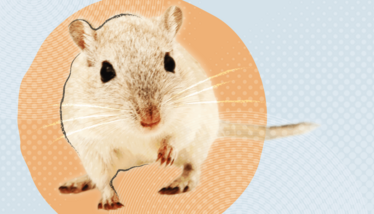Of Mice and Men
The discovery of focea in mice implies that their vision may be more similar to human sight than previously thought

Mice are crucial to research and development in ophthalmology, but how does mouse neuro-ophthalmology compare to that of humans? A recent study has revealed a region of the mouse brain responsible for enhanced spatial resolution – a feature of mouse eyesight not previously seen. Called the focea, this region is named after its closest human counterpart: the fovea, which is located in the retina and specializes in high-resolution vision. Because mice lack a fovea, researchers were unsure as to their spatial resolution capabilities – but the debate could soon be over. “We know that many species, including cats and monkeys, have better resolution in the center of the visual field,” explains co-lead researcher Pieter Roelfsema, “and this specialization may be even more widespread than anticipated.” Mice actually make compensatory eye movements to keep the region of eyesight that’s processed at the focea in front of them – similar to the human saccadic eye movements that focus the fovea on a point of interest.
This finding “increases the potential usage of mouse models as a surrogate for human vision and opens new possibilities for studying how information is brought into the focea,” explains co-lead researcher Matthew Self, presenting the possibility of using mouse models to investigate the neural circuitry of high-detail vision.
The discovery of spatial bias in mice visual processing was serendipitous; originally, the group planned to map the mouse visual cortex. “Finding a region with enhanced resolution was a surprise. That is quite often the case in fundamental research; you find something unexpected,” states Self.
The next steps for this research are already in place. “We are now studying how mice segregate objects from the background and how this form of vision is influenced by visual experience and learning,” says Roelfsema.
This article was originially published on The Opthalmologist. To access it, click the link.
Associate Editor















